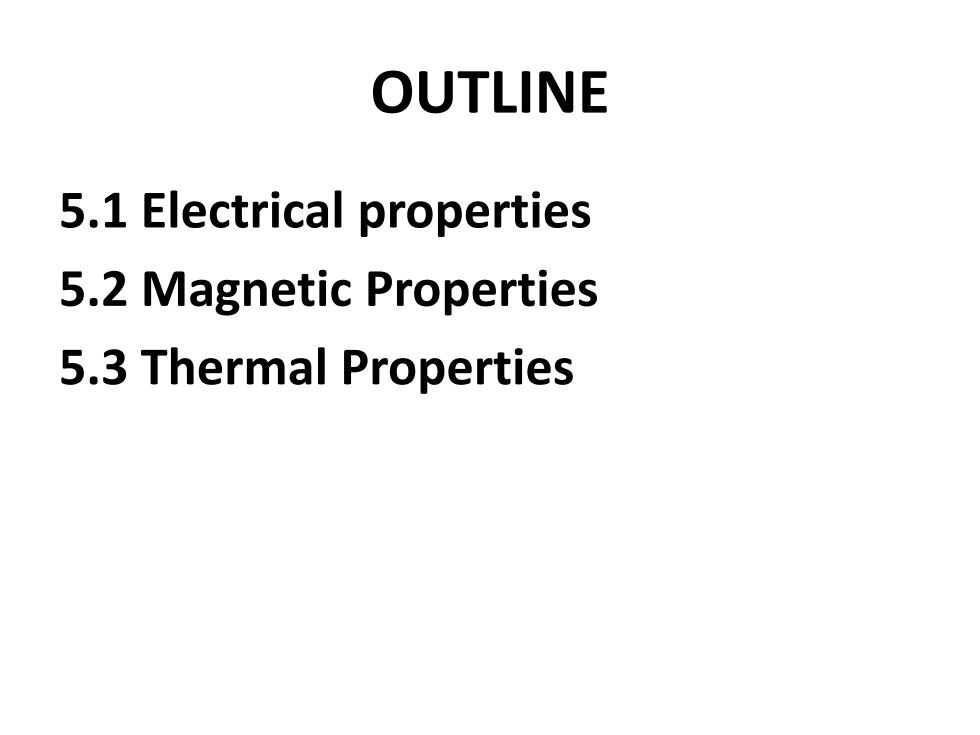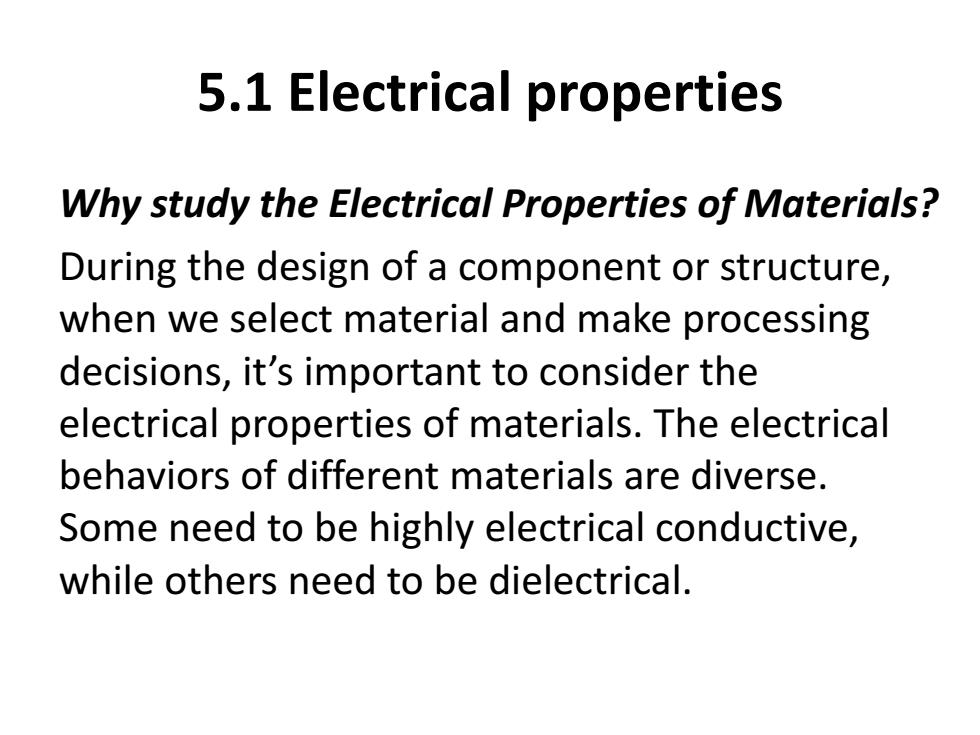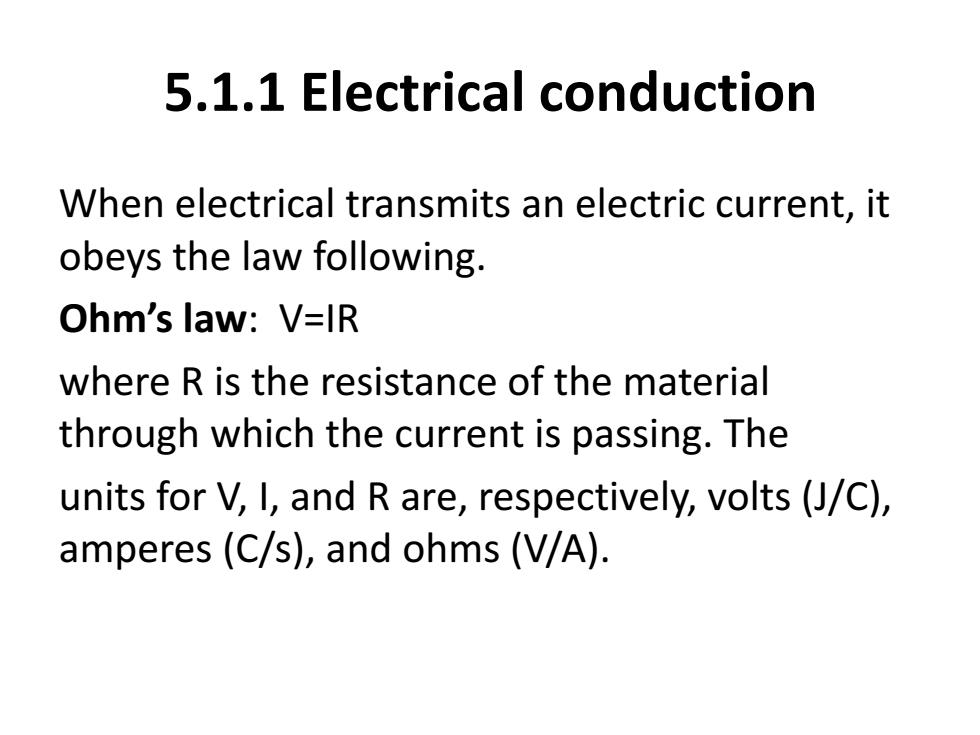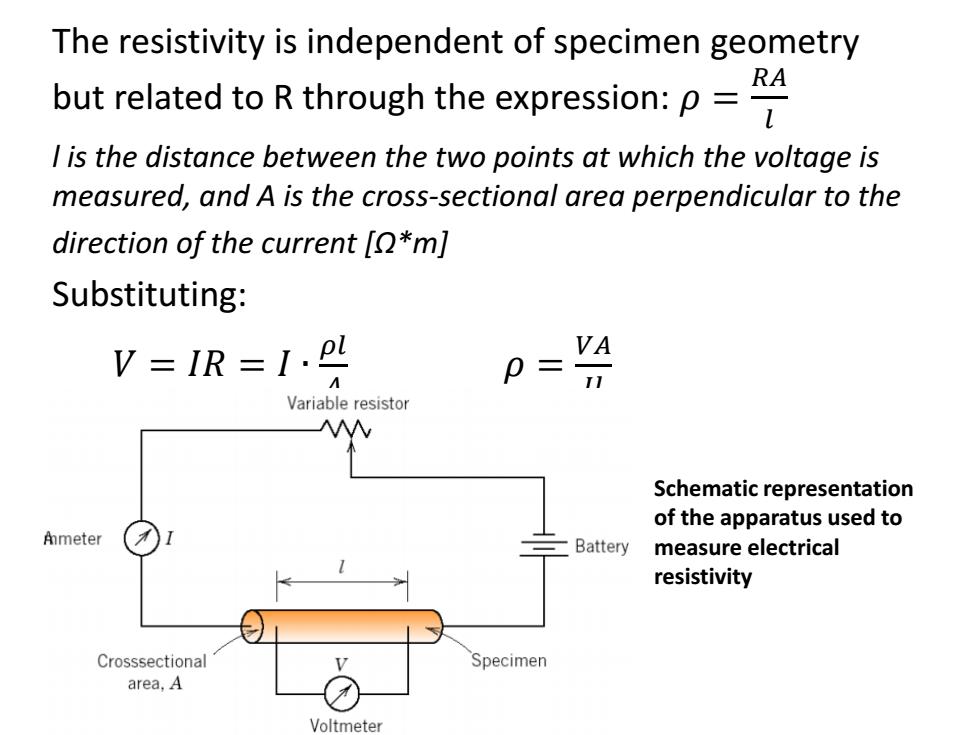
Chap.5 Material Physical Properties
Chap.5 Material Physical Properties

OUTLINE 5.1 Electrical properties 5.2 Magnetic Properties 5.3 Thermal Properties
OUTLINE 5.1 Electrical properties 5.2 Magnetic Properties 5.3 Thermal Properties

5.1 Electrical properties Why study the Electrical Properties of Materials? During the design of a component or structure, when we select material and make processing decisions,it's important to consider the electrical properties of materials.The electrical behaviors of different materials are diverse. Some need to be highly electrical conductive, while others need to be dielectrical
5.1 Electrical properties Why study the Electrical Properties of Materials? During the design of a component or structure, when we select material and make processing decisions, it’s important to consider the electrical properties of materials. The electrical behaviors of different materials are diverse. Some need to be highly electrical conductive, while others need to be dielectrical

5.1.1 Electrical conduction When electrical transmits an electric current,it obeys the law following. Ohm's law:V=IR where R is the resistance of the material through which the current is passing.The units for V,l,and R are,respectively,volts (J/C), amperes(C/s),and ohms(V/A)
5.1.1 Electrical conduction When electrical transmits an electric current, it obeys the law following. Ohm’s law: V=IR where R is the resistance of the material through which the current is passing. The units for V, I, and R are, respectively, volts (J/C), amperes (C/s), and ohms (V/A)

The resistivity is independent of specimen geometry but related to R through the expression:p= RA I is the distance between the two points at which the voltage is measured,and A is the cross-sectional area perpendicular to the direction of the current [Q*m] Substituting: V=IR=1. VA Variable resistor Schematic representation of the apparatus used to Ameter Battery measure electrical resistivity Crosssectional Specimen area,A Voltmeter
The resistivity is independent of specimen geometry but related to R through the expression: 𝜌 = 𝑅𝐴 𝑙 l is the distance between the two points at which the voltage is measured, and A is the cross-sectional area perpendicular to the direction of the current [Ω*m] Substituting: 𝑉 = 𝐼𝑅 = 𝐼 ∙ 𝜌𝑙 𝐴 𝜌 = 𝑉𝐴 𝐼𝑙 Schematic representation of the apparatus used to measure electrical resistivity